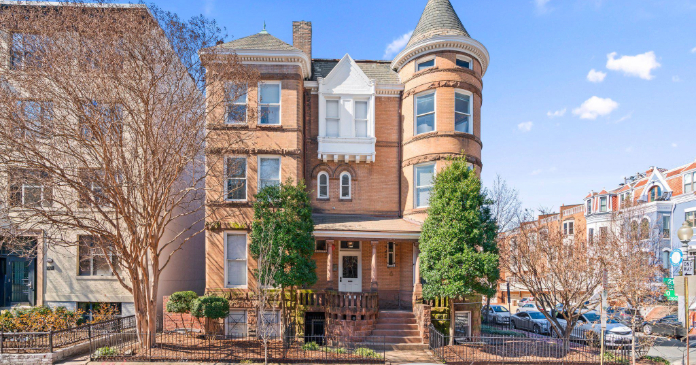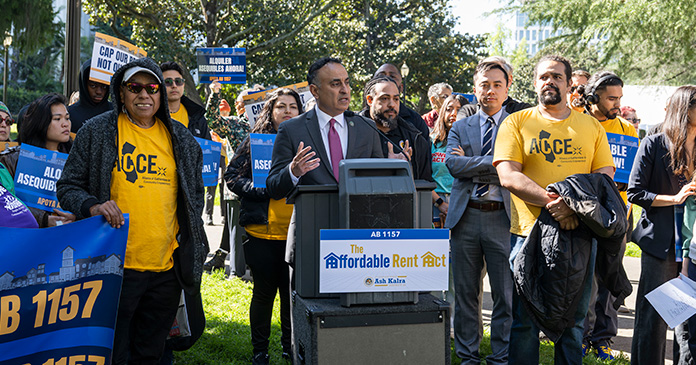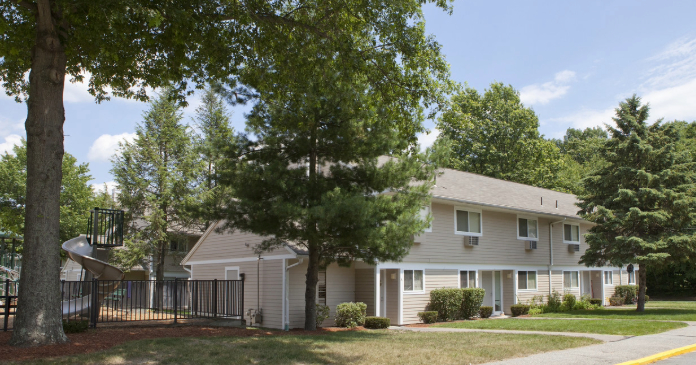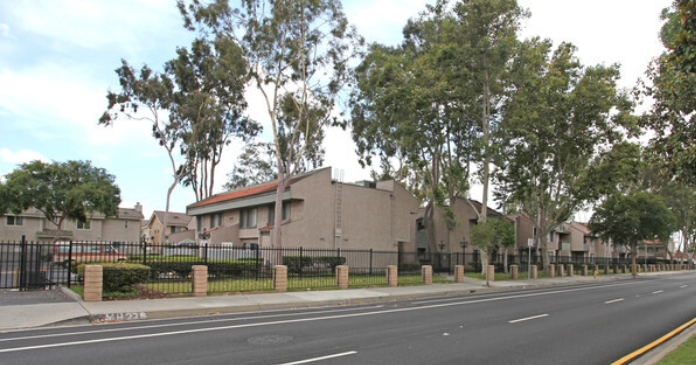Today, they are paying attention to the shadow supply of for-sale product looming on the margins coast to coast. The return of busted condos and other for-sale product to the rental supply is a trickle in some markets, a steady flow in others.
REITs got busy pushing rents right after the apartment business turned a corner in Q3 2005 and, by the end of 2006, overall rents were up four percent from the previous year. But really, rents had just returned to 2001 levels, while renter’s incomes increased 20 to 25 percent during the same period. Was the rent-hike party just getting started?
When asked during the Deutsche Bank Real Estate Outlook conference in January how much higher he thought rents might be in three years, AvalonBay President/COO Tim Naughton said, “I think they can grow 10 to 15 percent today and get back on the longer-term trend line of rent as a percentage of income. In our portfolio, that is less than 20 percent today, but typically has been 22 to 23 percent. There should be decent rent growth if supply and demand stay in check.”
But, after more than a year of tremendous occupancy and rent gains, most apartment REITs saw the rate of increase in both decelerate in Q4. Year-over-year rent growth slowed by around 200 basis points during that period, according to Axiometrics, and apartment REITs, which had been outperforming the broader REIT sector, were under performing by year-end.
REIT execs knew it would be hard to replicate the gains of late 2005 and early 2006, but disappointing results in the past few quarters have prompted some to adjust their outlook for 2007 to the lower ranges of guidance. “What’s different from this year to last is that we don’t have as much pricing power on new leases,” said Post Properties CEO David Stockert during the REIT’s Q1 earnings call.
“In Q4, our year-over-year rent growth was seven percent and 6.9 percent in Q1, but we’ve seen a slowdown in our ability to drive rent growth at the same level. Many of us using pricing software came out of 2006 with lower occupancy, with the expectation that we would recover occupancy in the strong leasing season, and we’re doing that, but at some cost to rent increases,” said Stockert. Post is dialing back its revenue expectations for the year, but lower than expected expenses will offset some of the pain, which is why the company is still maintaining the lower end of its guidance for NOI.
Equity Residential CEO David Neithercut, like some of his REIT exec peers, thought that last year’s growth might continue through 2007. The REIT saw a strong first quarter, but the story changed in April when Equity Residential (EQR) experienced softening in some markets where growth was expected. Summer will tell the tale. If the trend that began in April continues, EQR may have trouble reaching even the mid-point of its guidance.
Sure, there are explanations for the slower pace of growth–typical leasing season slowdown, the lack of condo conversions reducing supply, fading concessions burn-off–but the number of condo conversion reversions and newly built condos that could return to the rental supply remains the wild card in the supply/demand equation.
The wild card
Condo conversions were a boon to apartments in terms of supply, removing hundreds of thousands of units from rental stock, and, based on the restrained rate of apartment construction last year, it could take around 36 months to replenish the number of apartments lost to conversion since 2004.
Some 92,000 apartment completions are expected nationwide this year, just 2,000 more than last year, but that new supply doesn’t take into account the speculator units and failed condo conversions that are reverting to rental.
While Neithercut doesn’t discount the impact of investor units returning to the rental pool, he is most concerned by entire properties coming back and commencing aggressive lease-ups. Busted condo deals are a growing trend in markets like South Florida and Phoenix, where the conversion craze was craziest. But Neithercut thinks statistics are giving an inflated picture of how many units within those returning properties actually are vacant.
“You need to understand that properties that were in the process of contemplating going condo but didn’t, still remain, to some percent, occupied. We talked to our guys in Florida the other day and they were talking about 9,000 or so units coming from condo back into the rental pool, but the fact of the matter is only 25 percent of those are vacant,” he said. While that is more than Neithercut would like to see, he thinks that supply will be absorbed over a period of months, not years.
BRE Properties began to see returning condo supply erode the underlying strength of its San Diego, Sacramento and Phoenix portfolios last year. The REIT’s overall occupancy dipped to 93 percent in Q4, but bounced back to 95 percent in Q1, prompting BRE’s newly appointed COO Ed Lange to announce, “We’ve dug ourselves out of the occupancy hole we dug ourselves into last quarter and are well postured heading into peak leasing season– and virtually no concessions were used during this recovery period.” BRE CEO Constance Moore said the REIT has the pricing power for another rent push in Q2, but San Diego, Sacramento and Phoenix remain the trouble spots in the company’s portfolio.
It’s not just busted condos that are impacting REIT operations. Single-family homes priced to compete with apartments are putting pressure on three-bedroom rents in some markets.
Single-family rentals are an issue for BRE in Sacramento, San Diego, the Moreno Valley/Riverside sub-market of California’s Inland Empire and Phoenix. “There are 50,000 homes on the market in Phoenix and more than 8,000 are available for rent,” said Moore. The good news is, three-bedroom units make up only 10 percent of BRE’s entire apartment stock and Phoenix generates only four percent of the REIT’s NOI.
Camden Property Trust has experienced some of that competition in Las Vegas and Phoenix, but CEO Ric Campo believes strong but moderating demand will offset the increases in demand there.
South Florida is perhaps the market with the largest shadow supply. “Compared to the rest of the country, there is no market that comes close to South Florida in terms of the potential for overbuilding. There are arguably 30,000 to 40,000 condos that are going to be delivered there over the next three years that, based on historical volume, could be argued as a five- to seven-year supply. Housing prices have already declined fairly precipitously and probably there is more to come,” Archstone-Smith CEO R. Scot Sellers told attendees at the Citigroup Global Property CEO Conference in March, as he explained why his company recently sold all but one of its core assets in that market.
Archstone-Smith sold the majority of its South Florida portfolio to condo converters over the past several years and had about $350 million of same-store properties remaining. “We chose to sell them and exit the market for the time being because of our concerns about market fundamentals in the next couple of years. Whether that proves to be the case, I don’t know, but we felt it was better for us in terms of growth outlook to move our capital elsewhere,” Sellers said.
UDR, which derives 15.6 percent of its same store NOI from Orlando, Tampa and Jacksonville, but owns only one asset in the Southeastern part of the Sunshine State, is seeing the impact of the shadow supply of single-family homes and condos on its three-bedroom occupancies in Orlando and Tampa. “Three-bedrooms only represent five percent of my portfolio, but it does cause some friction,” said UDR CEO Tom Toomey, who thinks the oversupply should work itself out over the course of the year based on projected job growth in both markets.
If the shadow supply is the wild card that could tip the scales of supply and demand, jobs will determine REITs’ ability to push rents. And employment growth is slowing. “A year ago at this time you had job growth nationally that was 2.1 percent on an annualized basis and job growth today is 1.5 percent. So it’s a little bit softer in the cycle and some economists we’ve read have predicted this is a mid-cycle slowdown and that growth will resume after the housing market gets sorted out,” Stockert said.
REIT execs think job growth, while more muted than last year, should be strong enough to balance the fallout from the sluggish housing market. “If jobs start drying up, then I think you have to rewrite the game plan. The good news is there’s very limited supply coming over the fence,” said Toomey.
He thinks that while the long run of historically low interest rates and ease of financing turned thousands of renters into home buyers, the home building industry “made a hell of a lot of good renters bad homeowners in that process.” More news that will bolster the rental industry: the growing rate of foreclosures caused by over leveraging and adjustable rate mortgages (ARMs) is sending thousands of home buyers back to apartments, and increased lending standards in the wake of the sub-prime mortgage shake-up are likely to tighten, adding further to the rental pool.
It’s unlikely we’ve seen the bottom of the housing market and single- family home prices could retreat another 10 to 20 percent, said Toomey. Meanwhile, many would-be home buyers are content, for now, to rent and wait for lower prices down the line. Not a bad choice, since rent still is at a 50 percent discount to home-ownership.
















